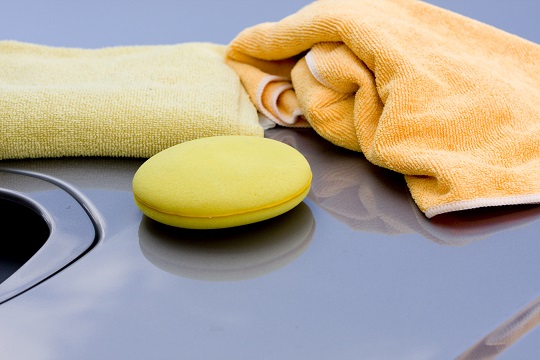

Kind of goes without saying but in an effort to be thorough and exact I’ve included this beginner step in-case anyone reading this is brand new to taking care of their car.
#Car wax by hand how to
How to prep your car for waxing Step 1: Wash and dry the car first. This article will cover how to apply a non-cleaning wax for paint in good to excellent condition.
#Car wax by hand driver
If the car is in fact a daily driver and more than a year old, and you live where it rains then it’s a given there’s going to be a dirt stain on the paint called traffic film or road film and the only way to remove this is by using a cleaner/wax aka an AIO. If after washing and drying your car the paint does not pass the baggie test, then chances are, besides having bonded contaminants it’s also going to have other surface impurities like oxidation and traffic film. If you have a brand-new car, fresh off the dealership’s showroom floor or car lot, and after washing and drying the car it passes the baggie test, then a non-cleaning wax would be the best choice. It will however leave behind more protection because this is its sole purpose. Because it’s cleaning or removing defects at the same time it’s protecting – this category of product cannot leave behind as much protection as a dedicated, non-cleaning wax.Ī non-cleaning wax, also called a pure wax, finishing wax or show car wax, offers zero ability to clean the surface as you use it, or remove any defects. The practical difference between a cleaner/wax and a non-cleaning waxĪ cleaner/wax or AIO will clean and protect in one step. To learn how to do the baggie test, check out this article. The best appearance results are achieved when there are no swirls and scratches, BUT if swirls and scratches don’t bother you and the paint on your car passes the baggie test or if it failed the baggie test and you removed the contamination via a mechanical process, (detailing clay or a detailing clay towel), then you can use a non-cleaning wax. Paint in excellent condition is clean and smooth to the touch, (passes the baggie test). Other terms used to describe non-cleaning waxes are,įor the most part, this category of wax should only be used on paint in excellent condition.

These are waxes that do not contain any type of cleaning agents or abrasive technology. If you remove paint defects to your satisfaction with an AIO you can always use a non-cleaning wax the next time you wax your car. You can hand or machine apply this product and the results will look dramatically better than if you use a non-cleaning wax. If your car is a daily driver and when you inspected the finish you found swirls and scratches, I would highly recommend starting with a great AIO. Let’s begin! There are two basic categories of waxes.Ĭleaner waxes also called AIOs, which means, All-in-One, are waxes that perform 3 functions in a single step.ġ: Compound – remove swirls, scratches, water spots and oxidation.Ģ: Polish – refine the finish to maximize gloss and clarity.ģ: Protect – leave behind some form of wax protection. Before we dive into how to wax your car, my own personal teaching style is to not simply teach people how to do a task but to also teach them why to do it in such a way. This article was originally published on Big's Mobile Detailing.The most important thing you can do to protect your car’s clearcoat finish as well as maintain that just detailed look with a deep, wet shine is to regularly wash and wax the exterior paint. We’ll come to you, so you can sit back and relax while we take care of your car.Ĭontact us today to learn more about our services or schedule an appointment. If you’re interested in scheduling a mobile car detailing appointment, Big’s Mobile offers a wide range of services to meet your needs. By taking the time to wax or polish your car on a regular basis, you’ll keep the paint looking shiny and new – and help it last for years to come. Wrap UpĪs you can see, waxing and polishing your car are essential steps in the car care process. Yet, if your car is regularly exposed to the sun, salt, or other harsh conditions, you’ll need to wax it more often to protect the paint. You should wax your vehicle at least once every three months. Polishing too often can damage the paint, so it’s best to stick to a schedule. You should only need to polish your vehicle once or twice a year maximum. Now that you know the key differences between car wax and car polish, it’s time to explore when you should use each.


 0 kommentar(er)
0 kommentar(er)
